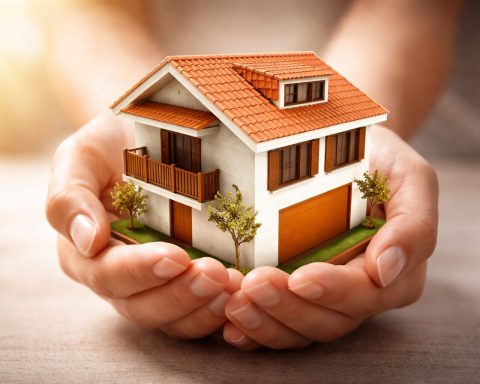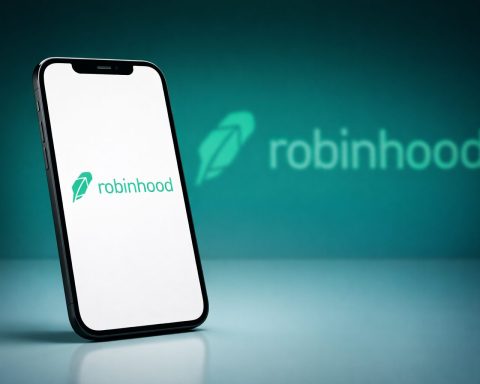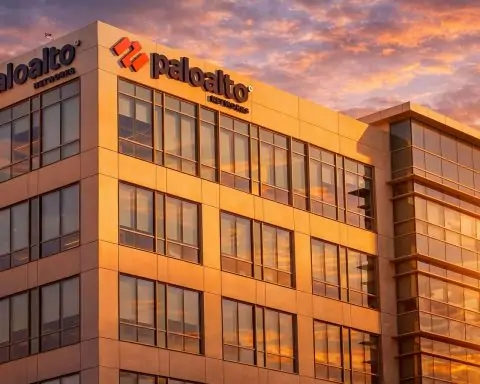Key Facts: – SWIFT has launched a major effort with 30+ global banks and Consensys (Ethereum software firm) to build a blockchain-based shared ledger for cross-border payments [1] [2].
- The prototype ledger (using Consensys/Ethereum technology) will target 24/7 real-time transfers of tokenized assets (stablecoins, digital deposits, CBDCs), drastically cutting multi-day delays [3] [4].
- Separately, SWIFT is testing an on-chain migration of its messaging system on Ethereum Layer-2 Linea (a zkEVM), chosen for its strong privacy features (zero-knowledge proofs) that fit banks’ compliance needs [5].
- The move comes as stablecoins and CBDCs surge: Citi sees up to $4 trillion in stablecoins by 2030 [6], and 90% of central banks are exploring digital currencies. Firms worry SWIFT could be made obsolete without an upgrade [7].
- Other industry players are racing too: at Sibos 2025, Visa unveiled a stablecoin pilot (using USDC/EURC) for instant payouts, noting cross-border payments are “stuck in outdated systems” [8] [9]. SWIFT’s announcement followed just a day later.
- Bank executives call SWIFT’s blockchain plan a “defining moment” for payments [10]. NatWest’s Lee McNabb says it provides the “foundational infrastructure needed for trusted, real-time, cross-border payments” [11].
Why SWIFT Is Overhauling Payments
For decades, SWIFT (the Society for Worldwide Interbank Financial Telecommunication) has run the messaging “plumbing” behind bank transfers – a system connecting >11,000 institutions in 200+ countries, moving trillions daily. But traditional cross-border payments remain slow and costly, often taking days via multiple correspondent banks. Crypto advocates even called SWIFT “antiquated” [12]. Now, under pressure from crypto stablecoins and looming digital currencies, SWIFT is racing to update its rails.
On Sept. 29, 2025 SWIFT announced a plan to add a blockchain-based ledger to its infrastructure [13] [14]. In its own words, SWIFT will “extend [its] financial communication role into a digital environment,” building a real-time log of transactions that uses smart contracts to “record, sequence and validate” each transfer [15]. An official press release says the shared ledger will initially focus on 24/7 cross-border payments, enabling instant settlement and interoperability with emerging systems (stablecoins, tokenized deposits, CBDCs) [16] [17]. In practice, this means SWIFT won’t just send payment instructions – it will also help settle them on a blockchain once the project matures.
The ledger will be built as a prototype with over 30 financial institutions (JPMorgan, HSBC, Deutsche Bank, Bank of America, etc.) and blockchain firm Consensys [18] [19]. Consensys, co-founded by Ethereum’s Joseph Lubin, provides the blockchain stack. SWIFT CEO Javier Pérez-Tasso says this “initial ledger concept” is paving the way for banks to “take the payments experience to the next level with SWIFT’s proven and trusted platform at the centre of [the] industry’s digital transformation” [20]. In short, SWIFT hopes to keep its network central even as banks move to tokenized money.
The Ethereum Layer-2 Pilot
In parallel, Swift is experimenting on-chain. According to crypto news reports, it is testing a migration of its messaging system onto Linea, a new Ethereum Layer-2 network developed by Consensys [21] [22]. Linea is a “zkEVM” chain, meaning it uses zero-knowledge proofs to bundle transactions (ZK-rollup) while remaining Ethereum-compatible. The appeal: banks get privacy and compliance. As The Block reported, Linea “emphasizes privacy through advanced cryptographic proofs, a feature deemed crucial for banks concerned with balancing innovation and regulatory requirements” [23].
The on-chain project reportedly involves over a dozen banks (including BNP Paribas and Bank of New York Mellon) and is expected to run for several months [24]. An anonymous source told The Big Whale newsletter that the project “promises an important technological transformation for the international interbank payments industry” [25]. Last year SWIFT had already conducted cross-chain experiments (July 2023 pilots showed tokenized asset transfers across blockchains), and concluded blockchain could remove frictions in global token markets [26].
By testing Linea, SWIFT is essentially exploring how to move its own messaging onto a blockchain backbone. If successful, banks could potentially finalize payments in real time on-chain, rather than waiting days for correspondent steps. Notably, CoinCentral reports SWIFT has even discussed a stablecoin-like settlement token as part of the pilot [27] – a “bridge” asset to shift value instantly across ledgers. This could make SWIFT directly compete with crypto networks (Ripple, etc.) and represents a radical shift from messaging to settlement.
Industry Context: Crypto, CBDCs and Competition
SWIFT’s move comes amid a broader shift in global payments. Stablecoins (crypto tokens pegged to fiat) are booming – Citi recently forecast up to $4 trillion in stablecoins by 2030 [28] – and major banks are exploring tokenized deposits and CBDCs. About 90% of central banks are researching digital currencies [29]. In March 2024 SWIFT’s head of innovation Nick Kerigan said they’ve trialed CBDC interoperability with dozens of central banks, planning to launch a real product in 12–24 months [30] [31]. He notes SWIFT’s vast network makes it a natural hub for all these currencies: “If we can plug in any number of networks [into the SWIFT system] it becomes a much more scalable option for the industry” [32].
Traditional payment giants are also innovating. For example, at Sibos 2025 Visa announced a pilot letting banks use Circle’s USDC and EURC stablecoins for cross-border payouts [33]. Visa’s Chris Newkirk exclaimed, “Cross-border payments have been stuck in outdated systems for far too long,” and said the stablecoin integration lays “the groundwork for money to move instantly across the world” [34]. Cointelegraph notes this Visa news came “a day after” SWIFT’s blockchain announcement [35]. These parallel efforts reflect a race: banks and fintechs alike want to cut costs and delays by pre-funding or tokenizing liquidity, especially for off-hours or weekend payments.
Other blockchain projects are underway too. The Bank for International Settlements runs CBDC trials, and firms like Chainlink have pilots to integrate tokenized funds with SWIFT [36]. Meanwhile, crypto networks (Ripple, Stellar, etc.) continue to court banks for cross-border rails. In this competitive landscape, SWIFT’s established network is both an advantage (existing reach) and a risk (seen as legacy). As Reuters notes, SWIFT’s leadership hopes adding blockchain features will let it “evolve while still providing compliance and resilience features traditional banks require” [37].
What Experts Are Saying
Industry veterans hail SWIFT’s plan as a watershed. Martin Tricaud of First Abu Dhabi Bank called the blockchain ledger “a defining moment for the future of global payments”, enabling “seamless, real-time cross-border settlement rails” that boost trade and investment [38]. Lee McNabb at NatWest said SWIFT’s move provides the “foundational infrastructure needed for trusted, real-time, cross-border payments” alongside existing systems [39]. HSBC’s Manish Kohli echoed that the collaboration complements their own digital currency efforts to make payments “faster, smarter and always available” [40].
Not everyone is shocked – fintech commentator Chris Skinner notes SWIFT is merely following a trend: “This latest development… follows in the path of other networks like Mastercard and Visa to tokenize assets… The fact they are doing this with a group of large banks is significant,” he told Computer Weekly [41]. Skinner adds that moves like the US “Genius Act” (which promotes stablecoin use) make such blockchain projects a “natural reaction”. In any case, most agree SWIFT’s entrenched position means it can’t ignore digital trends. The question now is execution: timelines remain fuzzy (SWIFT gives no exact launch date), and building a global blockchain ledger is no small feat.
The Road Ahead
SWIFT’s prototype (working with Consensys) is just the first phase. The press release says they’ll “work at pace” on the prototype and then plan further phases [42]. If successful, the system could eventually allow SWIFT members to send tokenized money (stablecoins, tokenized deposits, CBDCs, etc.) through one unified network instead of siloed rails. Regulators will watch closely, since issues like jurisdiction and compliance are tricky on blockchains.
For now, SWIFT’s blockchain announcement marks a major pivot. By linking old-school banking infrastructure with cutting-edge crypto tech, it aims to keep the trillions of dollars that flow through SWIFT moving swiftly in the digital age. As SWIFT’s CEO put it, they’re building “the infrastructure stack of the future” for global finance [43]. Whether SWIFT maintains its dominance or cedes ground to new players may depend on how fast and smoothly this blockchain makeover rolls out.
Sources: Reuters [44] [45], SWIFT press release [46] [47], The Block [48], CoinDesk [49] [50], Computer Weekly [51] [52], Cointelegraph [53] [54].
References
1. www.reuters.com, 2. www.swift.com, 3. www.reuters.com, 4. www.swift.com, 5. www.fastbull.com, 6. www.reuters.com, 7. www.coindesk.com, 8. cointelegraph.com, 9. cointelegraph.com, 10. www.computerweekly.com, 11. www.computerweekly.com, 12. www.reuters.com, 13. www.bloomberg.com, 14. www.swift.com, 15. www.swift.com, 16. www.swift.com, 17. www.swift.com, 18. www.bloomberg.com, 19. www.swift.com, 20. www.swift.com, 21. www.fastbull.com, 22. www.fastbull.com, 23. www.fastbull.com, 24. www.fastbull.com, 25. www.fastbull.com, 26. www.fastbull.com, 27. coincentral.com, 28. www.reuters.com, 29. www.reuters.com, 30. www.reuters.com, 31. www.reuters.com, 32. www.reuters.com, 33. cointelegraph.com, 34. cointelegraph.com, 35. cointelegraph.com, 36. coincentral.com, 37. www.reuters.com, 38. www.computerweekly.com, 39. www.computerweekly.com, 40. www.computerweekly.com, 41. www.computerweekly.com, 42. www.swift.com, 43. www.swift.com, 44. www.reuters.com, 45. www.reuters.com, 46. www.swift.com, 47. www.swift.com, 48. www.fastbull.com, 49. www.coindesk.com, 50. www.coindesk.com, 51. www.computerweekly.com, 52. www.computerweekly.com, 53. cointelegraph.com, 54. cointelegraph.com










